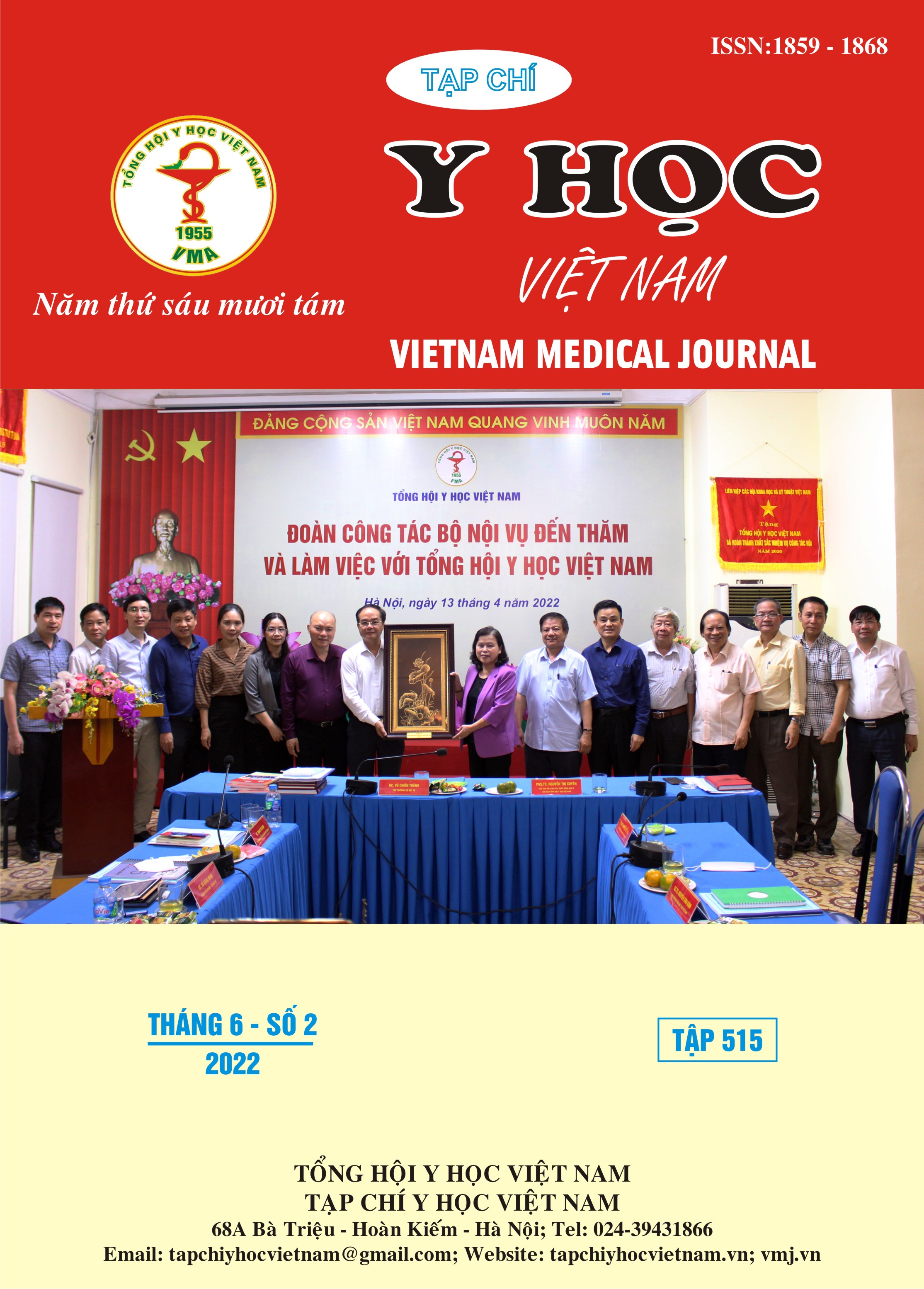SO SÁNH HIỆU QUẢ DUY TRÌ MÊ CỦA DESFLURANE VÀ SEVOFLURANE TRONG GÂY MÊ ĐIỀU TRỊ VIÊM TỦY RĂNG Ở TRẺ EM
Nội dung chính của bài viết
Tóm tắt
So sánh hiệu quả duy trì mê của desflurane và sevoflurane trong gây mê điều trị viêm tủy răng ở trẻ em được nghiên cứu thực hiện trên 60 bệnh nhân từ 3 - 6 tuổi gây mê điều trị viêm tủy răng tại Bệnh viện răng hàm mặt trung ương Hà Nội từ 6 - 2019đến 11 – 2019, chia ngẫu nhiên thành 2 nhóm. Nhóm S (n = 30): duy trì mê sevoflurane, nhóm D (n = 30) duy trì mê desflurane. Đánh giá dựa trên các tiêu chí: đặc điểm chung, nồng thuốc mê (%), thể tích khí mê (ml), mức độ an thần theo RASS, mức độ đau theo NIPE, tỷ lệ bệnh nhân có cử động bất thường theo Ellis, thời gian rút ống nội khí quản, tỷ lệ bệnh nhân nôn, buồn nôn tại các thời điểm T0: úp mask để khởi mê, T1: Sau khi đặt nội khí quản, T2: Thời điểm bắt đầu điều trị, T3 – 7: Khi điều trị được 20, 40... 120 phút, Tx: khi kết thúc điều trị, tắt khí mê. Kết quả cho thấy, đặc điểm chung, thể tích khí mê, mức độ an thần, mức độ đau, tỷ lệ bệnh nhân có cử động bất thường ở nhóm D khác biệt không ý nghĩa (với p > 0,05) so với nhóm S. Thời gian rút ống nội khí quản, tỷ lệ nôn, buồn nôn ở nhóm D thấp hơn có ý nghĩa (p < 0,05) so với nhóm S. Do đó, việc sử dụng desflurane duy trì mê trong gây mê điều trị viêm tủy răng ở trẻ em cho hiệu quả mê tốt. Nhóm gây mê desflurance có thời gian hồi tỉnh và rút nội khí quản sớm hơn, tỷ lệ bệnh nhân nôn, buồn nôn thấp hơn so với sevoflurane.
Chi tiết bài viết
Từ khóa
Gây mê trẻ em, viêm tủy răng, desflurane, sevoflurane
Tài liệu tham khảo
2. Bùi Thị Thúy Nga (2013). Nghiên cứu so sánh gây mê bằng sevofluranee và desfluranee trong phẫu thuật sỏi mật, Luận văn Thạc sĩ Y học, Đại học Y Hà Nội, Hà Nội.
3. Ellis (1996), Response to intravenous midazolam sedation in general dental practice, Br Dental J, 180: pp 417 – 420.
4. Welborn, Hannallah, Norden, Ruttimann (1996). Comparison of Emergence and Recovery Characteristics of Sevoflurane, Desflurane, and Halothane in Pediatric Ambulatory Patients. Anesthesia & Analgesia: November 1996 - Volume 83 - Issue 5 - p 917-920.
5. Cohen IT, Finkel JC, Hannallah RS, Hummer KA, Patel KM. The effect of fentanyl on the emergence characteristics after desflurane or sevoflurane anesthesia in children. Anesth Analg 2002; 94:1178-81.
6. Sessler CN, Grap MJ, Brophy GM. Multidisciplinary management of sedation and analgesia in critcal care. Semin Respir Crit Care Med. 2001; 22(2): 211-26.


